VHF and UHF channels
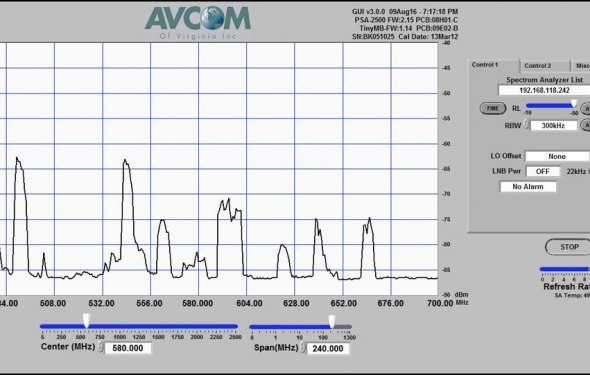
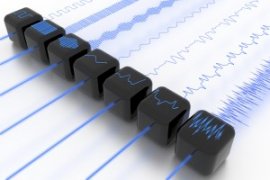 VHF (Very High Frequency) and UHF (Ultra High Frequency) come with distinct benefits and drawbacks, understanding these differences will help you determine top sign regularity for your two-way radio needs. By way of example, UHF cannot travel so far as VHF but may give higher data transfer career.
VHF (Very High Frequency) and UHF (Ultra High Frequency) come with distinct benefits and drawbacks, understanding these differences will help you determine top sign regularity for your two-way radio needs. By way of example, UHF cannot travel so far as VHF but may give higher data transfer career.
All cordless communication methods, including cell phones and two-way radios, run on what exactly is called running frequency. The government regulates these frequencies and also the equipment familiar with communicate through them. Since individuals need many different types of radio signals a number of cordless equipment is necessary to fulfill all requirements.
In america, the Federal correspondence Commission (FCC) regulates the air frequency rings. Based on US frequency groups you can find four different groups: low-band VHF (49-108 MHz), high-band VHF (169-216 MHz), low-band UHF (450-806 MHz), and high-band UHF (900-952 MHz).
The FCC is in control of whom runs within each particular band of course anybody has priority over various other providers. The main users tend to be properly certified radio and tv broadcasters along with commercial interaction solutions particularly mobile phones and two way radios.
VHF and UHF each consist of their own unique benefits and drawbacks.
VHF- Very-high-frequency
Very-high-frequency is commonly used for radio broadcast, two way land mobile phone radio systems, long-range information interaction, and marine communications, simply to name a few. VHF includes radio waves from 30 MHz to 300 MHz.
VHF waves mustn't exceed the area radio horizon of 100 miles. VHF frequencies are less inclined to be interrupted by atmospheric sound, issues with electric equipment, along with other interferences.
There are different rings within VHF regularity, including low-band and high-band. Low-band VHF variety of 49 MHz includes transmission of cordless microphones, cordless phones, radio-controlled toys and much more. A little greater VHF number of 54-72 MHz works television networks 2-4, including cordless methods defined as “assistive listening.” VHF frequencies 76-88 MHz run networks 5 and 6. The highest reduced musical organization VHF is 88-108 MHz and works the commercial FM radiobroadcast musical organization.
With many different people the low-band VHF is certainly not recommended for utilization of really serious programs because of the amounts of radio “noise” present at these frequencies. Regardless of the possible history sound this a well known option due to the inexpensive gear. Transmission power is limited to under 50 mW, unless you're running an assistive listening system inside 72-76 MHz range. Also, a sizable antenna booster is essential, measuring as much as 3 feet in total, thus restricting portability.
High-band VHF range is preferred for expert programs. The best high-band (169- 172 MHz) includes 8 various frequencies designated because of the FCC, and is frequently utilized by everyone and cordless microphone products. These frequencies tend to be generally “traveling frequencies” because they can be used throughout the US without fear of disturbance from broadcast tv. Energy is restricted to 50 mW, although antenna dimensions are smaller (around 20 ins per ¼ wavelength type). Businesses, government functions as well as the Coast Guard are powered by this “traveling” musical organization. For most readily useful outcomes you usually only would you like to function 2-3 products with this frequency.
The high-band VHF between 174 and 216 MHz is used for VHF tv networks 7-13. Top quality audio can be done as well as smaller antenna size, right down to 14 ins or less. Similar 50 mW power restrictions apply.
UHF- Ultra High Frequency
UHF radio waves are much shorter in length than VHF, calculating around 12 to 24 inches. As a result antenna length is paid off as well as radio range. Anything from a building to a person body can hinder UHF transmissions. Dropouts and interferences tend to be more most likely, but higher bandwidth career is allowed. Thus you might find a wider regularity range also wider number of sound signal. To 250 mW is allowed, surpassing the 50 mW power limitations put on VHF.
Low-band UHF overlaps with high-band UHF, low is 450-536 MHz and large is 470-806 MHz. Usually, company solutions and UHF tv networks 14 through 69 work making use of these frequencies. High-band UHF (such a thing above 900 MHz) provides the least amount of disruptions and requires antennas measuring between 3 and 4 inches. These stations work studio-to-transmitter links and also other primary users and additional channels.
UHF radio waves generally only get as far as line of sight. Anything when it comes to your picture will even affect frequency range, such as for example buildings, high trees or other obstruction. The transmission is sufficient to penetrate through building wall space, making interior reception a chance. It is the restricted line-of-sight broadcast range that makes UHF unsuitable in some instances. VHF offers a much bigger broadcast range, which is favored in a few sectors.
UHF radio indicators are employed in many issues with life including satellite communication, GPS, Wi-Fi, Bluetooth, walkie-talkies, cordless phones, cellular phones, and tv broadcasting.
A big advantageous asset of UHF transmission may be the brief wavelengths from the high frequency. The size of the radio wave relates directly to the size of transmission as well as the reception antennas. In general, UHF antennas are brief and broad.
The expense of running UHF gear outweighs the operation of VHF gear. This is because it's more work to produce UHF appropriate devices on the basis of the ways high-frequency and quick wavelength radio indicators communicate together. The real difference in cost mainly relates to the need for antennas, cables also additional gear.
Need assistance distinguishing top radio frequency for your requirements? Contact Highland Wireless these days and talk to leading professionals with regards to two-way radio technology.
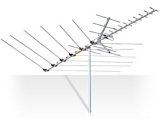
|
Channel Master CM 3018 UHF / VHF / FM HDTV Antenna - 60 mile range (CM3018) Speakers (Channel Master)
|
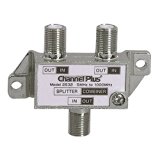
|
2 Way Splitter Combiner Bi-Directional 1 GHz Video Signal Coaxial DC Block Coax Cable Splitter UHF / VHF TV Antenna Combiner, 5-1000 MHz Speakers (Channel Plus)
|
|
E-More Indoor HDTV Antenna Amplified HDTV Antenna 50Miles Long Range VHF UHF Amplifier Signal Booster with USB PowerSupply and 16.4ft High Performance Coax Cable Speakers (E-More)
|
|
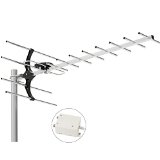
|
1byone Digital Amplified Outdoor / Attic HDTV Antenna, 70 Miles Range with Power Supply Box for VHF and UHF Band CE (1byone)
|
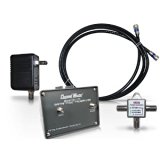
|
CHANNEL MASTER 7778 TITAN 2 - UHF / VHF / FM HIGH GAIN HDTV BROADBAND ANTENNA PREAMPLIFIER Speakers (Channel Master)
|